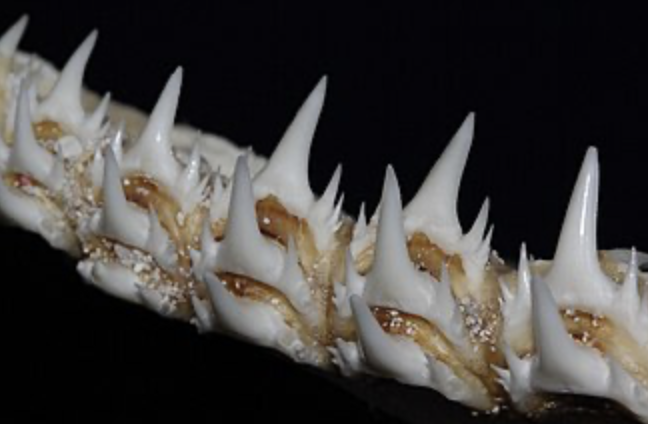Most people assume sharks reproduce in only two ways: laying eggs or giving live birth – however, the reality is more complex. While these are indeed the two main categories, there are actually two other lesser-known variations that make shark reproduction far more diverse than most realize.
Over 400 million years of evolution, sharks have fine-tuned their approach to bringing new life into the ocean. Some methods are relatively straightforward, while others venture into more nuanced biological territory. Understanding these four distinct reproductive modes offers valuable insight into how sharks have evolved and why different species use different strategies to ensure survival of their young. Each method showcases a different approach to one of nature’s most fundamental challenges: successfully bringing the next generation into the world.

The most familiar form of shark reproduction to us humans is viviparity, or true live birth. In this method, shark embryos develop inside the mother and receive nourishment directly through a placental connection, much like mammals. During gestation (pregnancy), the shark pups live on the placenta where they receive nutrients and oxygen through an umbilical cord found between the pectoral fins (like a belly button!). However, unlike mammals, once shark pups are born, they must immediately fend for themselves (swim and hunt) as pups do not receive parental care beyond birth. Some shark species that are viviparous include the Blue shark (Prionace glauca), Pigeye shark (Carcharhinus amboinensis), and Bull shark (Carcharhinus leucas).

The second method of shark reproduction is oviparity, where sharks lay eggs rather than giving live birth. Oviparous sharks produce eggs enclosed in protective, leathery pouches–often called ‘mermaid’s purses’–that attach to rocks, coral, or seaweed on the ocean floor. Additionally, rather than the mother shark supporting embryonic development directly, the egg provides everything the shark pup needs as they can absorb nutrients from the yolk-sac before hatching. The eggcase can have different variations in appearance based on the shark species. For example, Port Jackson sharks lay eggs that have a similar appearance to a corkscrew (spiral-shaped), while Catsharks lay eggs that more closely resemble the classic ‘mermaid’s purse’ egg. The eggs can also have different features like curled tendrils, sticky mucus, and horns that help the egg to ground itself into one spot or onto one substrate (like seaweed or between rocks). The different shapes and features allow the mother laying the eggs to more easily hide, fix, or wedge the egg into a safe place. The female will often spend a long time laying her eggs, decreasing the chance of the egg becoming loose from its hiding spot or vulnerable to predation. It normally takes between six and nine months for the eggs to hatch into a fully-functioning shark.
The third method represents a middle ground between the previous two. Ovoviviparous sharks produce eggs like oviparous species, but instead of laying them externally, these sharks produce eggs that are retained internally, with embryos hatching inside the mother before being born as fully formed pups. Allowing the hatched embryos to remain inside the mother before birth provides protection against possible predators. The baby sharks, however, are not connected to the mother via an umbilical cord, but feed on the egg’s yolk supply, as well as unfertilized eggs (a practice known as oophagy), and even the embryos of their brothers and sisters (a practice known as intrauterine cannibalism). Eating unhatched siblings allows there to only be the strongest sharks born, a unique practice seen in the Sand tiger shark (Carcharias taurus). Other shark species that engage in ovoviviparous reproduction include Great white sharks (Carcharodon carcharias) and Cookie cutter sharks (Isistius brasiliensis).

The last and most unexpected method is parthenogenesis–asexual reproduction without fertilization from a male. While rare, this phenomenon has been documented in several shark species held in captivity, where females have produced viable offspring despite having no contact with males. This method, because there is no male genetic information, is essentially cloning the female. This is possible because when an egg is formed via meiosis, three other polar bodies are formed alongside it, and like the egg, the polar bodies contain half of the female’s genetic makeup. Normally, the other polar bodies are reabsorbed by the female, but in parthenogenesis, one of the polar bodies is basically used to fertilize the egg. This reproduction strategy, however, is not ideal as it reduces genetic diversity, and, therefore, reduces adaptability, which can make the shark more vulnerable to environmental change and disease. Consequently, many embryos born via parthenogenesis have high rates of mortality, especially before the shark reaches sexual maturity, which is an obvious ramification of cloning. However, there are hypotheses why asexual reproduction may be beneficial, including one, set mostly in aquarium settings, that states it can be beneficial for the female to asexually reproduce in the absence of males. There may be other reasons, though, as the success of parthenotes (organisms born via parthenogenesis) differs depending on the species. Some species that have been recorded to use parthenogenesis include Zebra sharks (Stegostoma tigrinum) and Whitespotted bamboo sharks (Chiloscyllium plagiosum).
These four reproductive methods–viviparity, oviparity, ovoviviparity, and parthenogenesis–demonstrate the extraordinary adaptability of sharks over millions of years of evolution. While scientists understand some of the advantages each method provides, many questions remain unanswered. Why do certain species retain eggs internally while others deposit them externally? What environmental pressures trigger parthenogenesis in the wild? Each reproductive strategy serves a purpose, whether for protection, resource efficiency, or survival in the absence of mates, though the full picture becomes more clear as research advances. What is certain is that shark reproduction is far more complex and fascinating than most people ever imagined.
Caption for featured image: A shark eggcase or ‘mermaid’s purse’ that results from oviparous reproduction (Image credit: Sander van der Wel, licensed under CC BY-SA 2.0. No changes made)